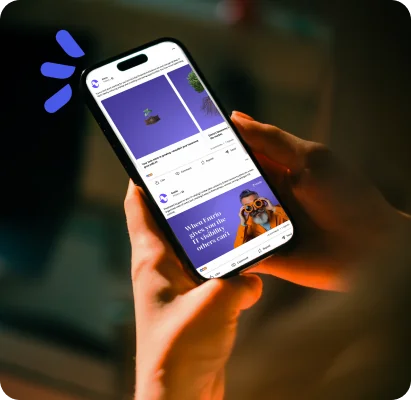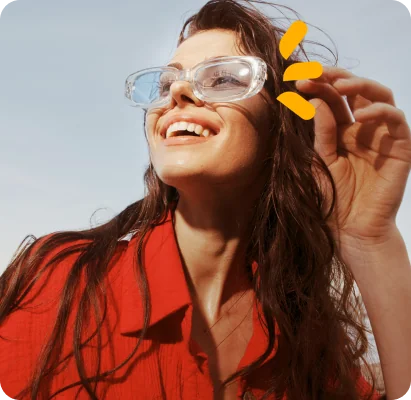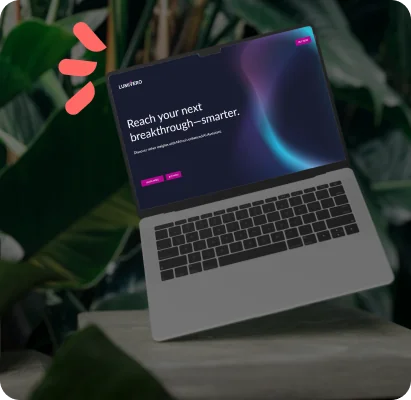
Prompt: A modern painting of a frog eating a donut by a river — generated with DALL·E (via ChatGPT)
This blog was originally published in 2023 and has been updated. At Accelity, we’re always testing new tools to help us work smarter and better serve our clients.
In the past few years, AI has infiltrated nearly every corner of marketing. From copywriting to campaign strategy, it’s becoming a tool for everything. But things are a bit more complicated when it comes to graphic design. While AI tools like ChatGPT have revolutionized content creation, generative design tools still have some creatives worried. Many are asking: Is AI a partner in innovation or a potential threat to artistry?
In this blog, we explore the role of AI in graphic design, examining its potential benefits and the concerns it raises.
We asked our in-house Digital Media Designer, Nate Panetti, for insights into how AI is shaping the design industry—and what tools he's been using to support his creative work.
Generative AI tools our design team is testing
With all the hype around generative AI in content creation, many companies are exploring how AI can also transform graphic design. We’ve had our share of fun testing out these tools to see how well they handle tasks like image generation, editing, and enhancement (fingers are still a work in progress).
Here’s a look at some of the tools we’ve been experimenting with:
Adobe Photoshop Generative Fill
Adobe Photoshop Generative Fill is a powerful AI-driven feature that allows users to add, remove, or modify content in images using simple text prompts. Since most of our design team already works in Photoshop, we’ve started experimenting with Generative Fill to tackle tasks like object removal, background extension, and building new compositions from scratch. This feature requires a paid Photoshop subscription.
Photoshop Generative Fill features include:
- Image generation: Create original, high-quality visuals from text prompts, seamlessly integrating new elements into existing images.
- Inpainting: Add or remove elements with realistic detail, account for lighting, shadows, and textures.
- Outpainting (Generative Expand): Extend images beyond their original borders to create expanded, cohesive scenes.
- Smart retouching: Make context-aware edits that blend naturally with the surrounding image.
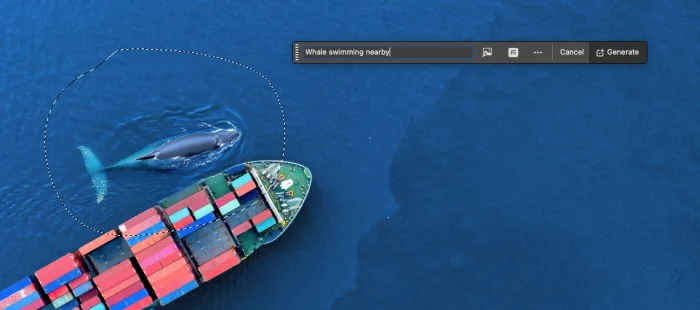
Shutterstock AI Image Generator
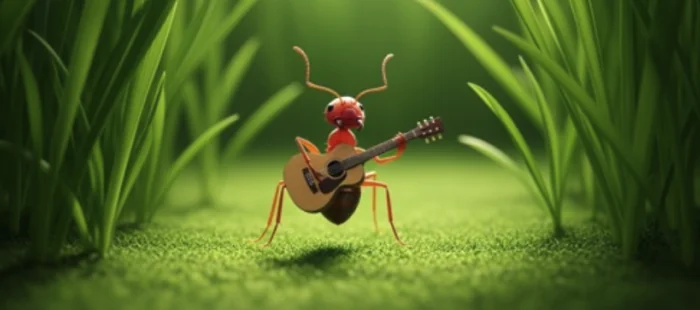
Prompt: An ant playing guitar in tall grass — created with Shutterstock AI Image Generator
A prompt like the one above might seem whimsical, but tools like Shutterstock’s AI Image Generator turn these visions into reality. It's an intuitive way to create fun images quickly, though we still have to make sure the final product meets our creative needs.
Adobe Firefly
As an Adobe-obsessed team, we couldn’t resist testing out Adobe’s Firefly tool. It began with image generation from text prompts, but Adobe has since expanded it to create not only images but also videos and vectorized design files. What makes it stand out is that Adobe trains Firefly only on licensed or copyright-free content, making it a more ethical option.
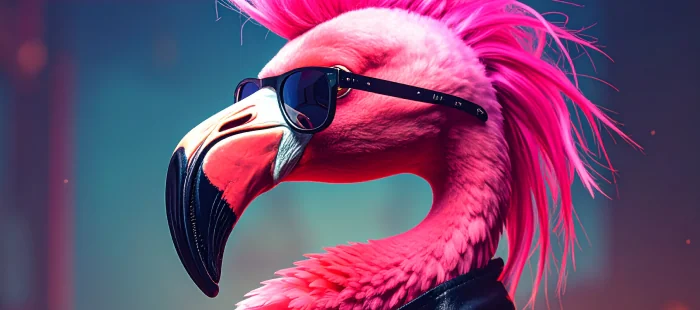
Prompt: A punk rock flamingo with a mohawk — generated using Adobe Firefly
With Adobe Firefly, designers can achieve:
- Text-to-image: Generate images from detailed text prompts.
- Text effects: Apply styles or textures to text.
- Recolor vectors: Automatically adjust color variations of vector artwork from a detailed text description.
Canva

Prompt: A professional headshot reimagined as an oil painting with Canva’s AI Image Generator.
Not all of our team members are design experts, but everyone uses Canva. They’ve integrated a simple text-to-image feature that’s available for free to users. It’s great for those who need quick visuals but don’t have the advanced skills or time to do it manually.
How we’re using AI to market smarter
While we’re still cautious about relying on AI for full design generation (due to ethical concerns and its current limitations), there are plenty of ways AI has been a game-changer for automating tasks and enhancing our creative output:
1. Removing backgrounds from images
Background removal is a tedious task, but AI tools like Remove Background have made it incredibly easy. Instead of spending time in Photoshop erasing backgrounds pixel by pixel, we can automate the process in seconds. It saves time and allows us to focus on other parts of the creative process.
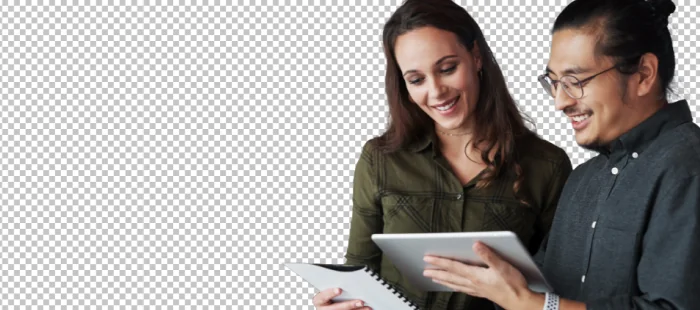
2. Creating a background
Removing a background is one thing, but using AI to extend or enhance a background where it didn’t originally exist is a whole other challenge.
Our CEO, Jackie, needed an updated image, but we didn’t want to take the time for another photoshoot. Instead, we used Adobe Photoshop’s Generative Fill feature to expand the background and zoom out her image to fit a square format. It wasn’t about completely changing the background, but enhancing it to match the new crop.
This quick fix saved us the hassle of reshooting, and the result was an image that worked perfectly for the website.
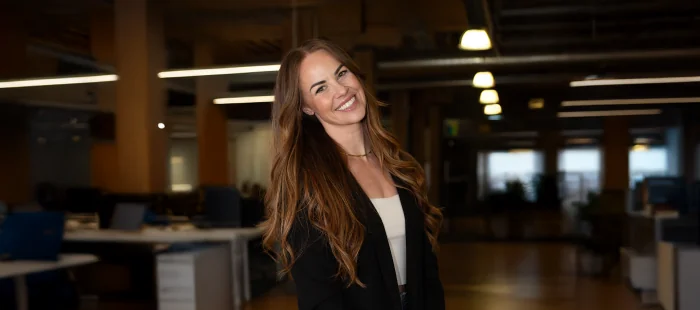
A final note about using AI for design
While our team is excited about the potential of AI to help automate simple tasks or jumpstart our creativity, it comes with some important caveats. AI is a tool, not a replacement for human creativity. Here are some things we recommend avoiding:
- DON’T generate campaign assets: AI can be a great source of inspiration, but don’t rely on it for final deliverables.
- DON’T mimic an artist’s style: It might be tempting, but copying someone’s work (unless it’s in the public domain) is unethical.
- DON’T replace creativity: AI lacks the metaphorical thinking and artistic intuition that human designers bring to the table.
- And maybe DON’T create images with fingers: If you’re into 14-fingered mutant nightmares, AI’s finger generation feature is for you. Otherwise, it’s best to steer clear.
AI has power, but it’s no replacement for human creativity. When we use it intentionally, AI levels up our design process. The real magic happens when tech meets talent.For more insights on AI in marketing, check out our blogs on AI in copywriting and AI for campaign strategy.
Subscribe to our newsletter
Curated content, news articles, team updates and more.

